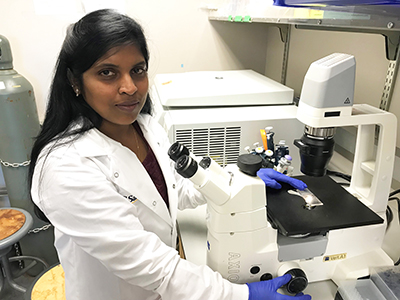We reach more than 65,000 registered users in Dec!! Register Now

Researchers Uncover Mechanisms behind Enigmatic Shapes of Nuclei
- October 05, 2024
- 6 Views
- 0 Likes
- 0 Comment
Scientists may be able to direct immune cells toward diseased areas
Nearly 150 years ago, scientists discovered that specialized blood cells serve a vital role in immune system protection against infection and illness.
Certain groups of these white blood cells, now known as neutrophils, feature a nucleus that is structured strikingly different than most nuclei. The majority of cells feature round- or oval-shaped nuclei that are rigid, but neutrophils differ in that their nuclei adopt multiple lobular structures akin to that of flower petal arrangements.

Using a combination of ancient staining procedures combined with advanced techniques, named chromosome-conformation-capture studies, the researchers unveiled how flower-like nuclei are assembled. While chromosomes of rounded cells fold into stacked bundles of DNA loops, neutrophil genomes lack such loops. Remarkably, when the researchers removed chromatin loops, progenitor cells swiftly converted round nuclear shapes into flower petal arrangements like those found in neutrophils. This simple conversion also sufficed to activate thousands of genes associated with an inflammatory gene program that allows neutrophils to combat invading bacteria.
After unveiling the neutrophil loop assembly question, the researchers now believe they have the instructions to guide the development of new nuclear shapes.
“This potentially opens an exciting new chapter in immune therapeutics since theoretically it should be possible to change the nuclear structure of killer immune cells so that they can more easily invade complex, solid environments, such as tumors,” said Murre. “Essentially, this could lead to engineering novel nuclear shapes in effector immune cells, which is a new concept in therapeutics development.”
The authors of the study include: Indumathi Patta, Maryam Zand, Lindsay Lee, Shreya Mishra, Alexandra Bortnick, Hanbin Lu, Arpita Prusty, Sara McArdle, Zbigniew Mikulski, Huan-You Wang, Christine Cheng, Kathleen Fisch, Ming Hu and Cornelis Murre.
Funding for the research was provided by the National Institutes of Health, U.S.-Israel Binational Science Foundation and an Imaging Scientist Grant from the Chan Zuckerberg Initiative.
List of Referenes
- Indumathi Patta, Maryam Zand, Lindsay Lee, Shreya Mishra, Alexandra Bortnick, Hanbin Lu, Arpita Prusty, Sara McArdle, Zbigniew Mikulski, Huan-You Wang, Christine S. Cheng, Kathleen M. Fisch, Ming Hu, Cornelis Murre. Nuclear morphology is shaped by loop-extrusion programs. Nature, 2024; DOI: 10.1038/s41586-024-07086-9
Cite This Article as
No tags found for this post









